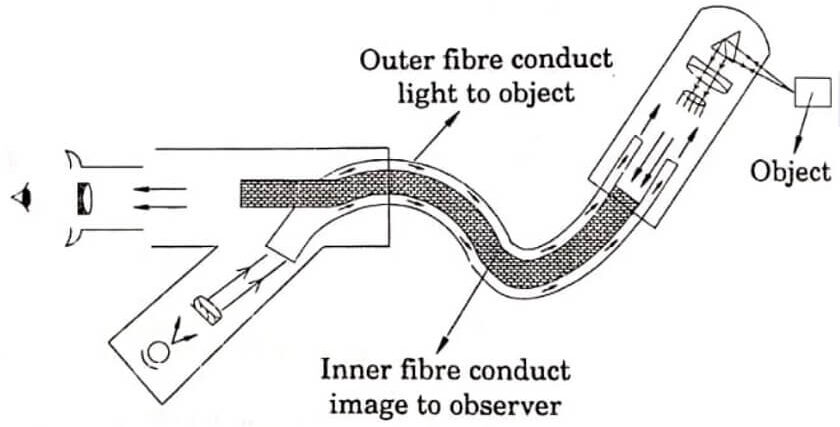Endoscopy is a technique used in medical field to visually analyse the function or part of various organs, joints and cavities present inside the human body. Physicians use this technique to diagnose, monitor, and surgically treat various medical problems.
An endoscope is a long, thin, flexible tube with a tiny video camera and light on the end. Optical fibres are employed in an effective manner for endoscopy and hence, the terminology optical fibre endoscope. Fibre optic endoscope uses optical fibres for transmitting and receiving the input and output light signals.
Construction
It consists of two optical fibres, light source, sensing probe, and visual output devices. One optical fibre is called light fibre (outer fibre) through which light is allowed to pass through it. The other fibre is known as image fibre (inner fibre), through which the light reflected by the interior organs has been received.
The endoscope is capable with camera or video recorder to document the images of the interior organs at the viewing end of the endoscope. The schematic diagram of fibre optic endoscope is as shown in Fig.1

Working
- First, the coaxial optical fibres are inserted near the organ through mouth or through a small incision in the skin.
- Light from the source is allowed to pass through the outer optical fibre, and it reaches the sensing probe at the other end of the optical fibre.
- The sensing probe focuses the light on the particular organ which is to be analyzed.
- The organ reflects the incident light.
- The reflected light carries the information of the organ, and it is received through the inner fibre.
- Finally, the reflected light rays are collected by CCD (change coupled device) and electrical signals are produced, which are fed to the video monitor to get image of the organ.
- By using the surgical instruments, various samplings, diagnosis and treatments can be performed.
Advantages
- Spend less time in the hospital.
- Faster Recovery and quickly to do normal activities.
- Less scarring and other side effects.
- Less pain after surgery which reduce the pain medicines.
Applications
- It is used to study the interior of the lungs and the other parts of the human body that cannot be viewed directly.
- It can also be used to study the tissues and blood vessels far below the skin.
| Read More Topics |
| Fibre optical communication system |
| Introduction and construction of fibre optics |
| Industrial applications laser welding |





